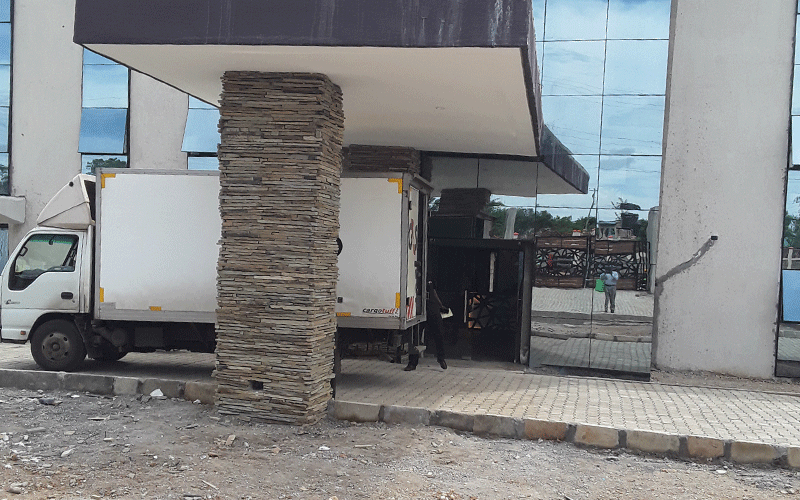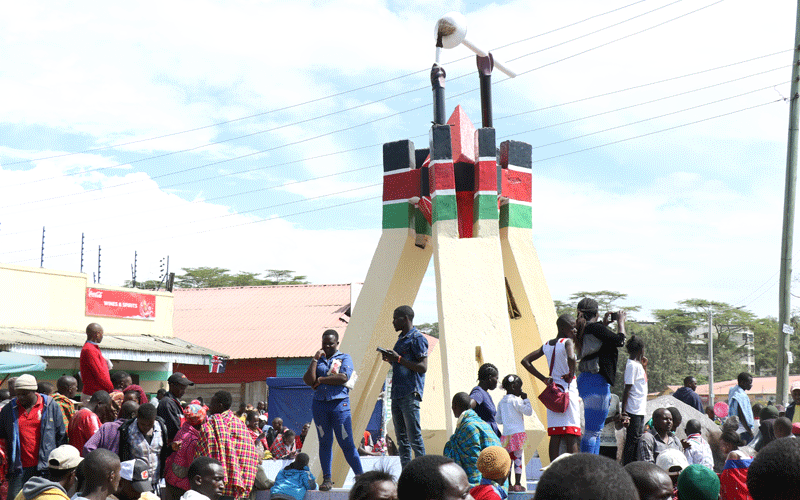Narok property market defies Covid-19 pandemic to grow

Real estate transactions in Narok town continue unabated despite the negative impact of the coronavirus pandemic.
Property dealers say although construction of some projects has stalled due to night curfews and challenges acquiring some building materials, land and building sales are undeterred by measures to contain the virus.
Ochiengo Onduso of Ochiengo Onduso and Company Advocates says his law firm executes about 20 land conveyance documents every day, adding that despite Covid-19, the number has not dropped.
“It dropped when the local Land Registry office was briefly closed, but would-be land buyers and sellers have now trooped back for searches.
Apart from other litigation issues, conveyancing contributes about 70 per cent of our income,” he says.
Tourism peak season
According to Henry Nyaema of Boma Property Valuers, land value has not depreciated, adding that when the first local virus case was reported in Nairobi and later followed by closures of Land Registries, there was a break in land and property searches.
“We took a small break when Covid-19 was first reported. But later things normalised and we are back to business,” he says.
Narok town’s real estate sector growth has been driven by new learning institutions, tourism and agriculture earnings in the last 10 years.
The establishment of Maasai Mara University, Narok Teachers College and Maasai Mara Technical College were major turning points.
The establishment of the university in 2008 saw investments in rental property soar as students, teaching staff and workers scramble for available accommodation, initially, inadequate and substandard.
Also boosting business was the opening of Toyota Kenya Service plant, a John Deere Tractor show room, the Oltalet Mall, hotels, financial institutions, hospitals and students hostels, among other facilities.
During the tourism annual peak season in Mara Mara Game Reserve and wheat harvesting, which usually coincide, financial experts estimate that more than Sh50 million change hands here every day. 
Land prices within the main town have continued to rise from about Sh10 million per acre to about Sh80 million in the last decade after more individuals and companies scrambled for space to set up businesses in an area that was a 24-hour economy before the epidemic disrupted it.
Property prices are also receiving boosts because of the Narok-Bomet road, which links Nairobi with South Rift, Nyanza and Western Kenya.
All major roads are now either tarmacked or upgraded, making access to the town and properties easy.
The completion of upgrading of Narok-Sekenani Gate road that links the town with the Game Reserve last year to bitumen standards has aided the rise of prices of land along the new highway, which is under the national government.
As a result, plot prices along the busy road from Total area all the way to Ololulung’a Trading centre where Mara University and other developments are located (a 35km radius) have risen, especially for new entrants in real estate.
So are parcels of land along the Narok-Mai Mahiu and Narok-Mau Narok roads where developments in real estate have in the last few years taken place at a high rate.
Tribal clashes
Due to the high rentals, many people live outside the town suburbs in areas such as Ololulung’a, Mulot and Suswa.Bed sitters are the most popular with tenants.
All that was made possible after group ranches, which bordered Narok town and started as a livestock auction in the 1960s but rapidly developed from 2009, were subdivided and got new owners who are now willing to sell land to investors.
According to the local Land Registry, more than 1,000 land searches are carried out daily, illustrating the thirst for land for settlement and commercial purposes. It is a town where land speculators are living large from all over the country.
With access to bank loans, investments in commercial and rental properties have grown at breath-taking levels as pieces of plots measuring 100ft by100ft in areas outside the town going for between Sh7 million to Sh13 million.
Before the rush, many considered the place as insecure, going by three successive land clashes that were fuelled by politicians during the Moi regime who wanted “outsiders” (madoadoa) or to leave.
Challenges
Though initially unplanned, the town has rapidly grown albeit haphazardly, with most modern buildings and services shifting to areas along the Narok-Bomet and Narok-Sekenani roads.
The decision to move them out of the CBD was informed by perennial floods, which annually destroy property worth millions of shillings.
Despite efforts to expand waterways, the town is still prone to floods, which according to independent valuations, run to million of shillings in losses to traders. 
The water supply, built before independence to serve less than10,000, is inadequate for 70,000 people (as per the 2019 census).
Narok also lacks a sewage treatment plant, but laying of sewerage infrastructure has commenced as part of a Sh6.2 billion project.
There is only one public toilet at the main bus station and power outages are common.
“Traders and plot owners pay huge sums of money to the county government in cess, rates, tariffs and fees, but still struggle to get services such as clean water,” says Jackson Kamoe, former chairman, Kenya National Chamber of Commerce and Industry
Stanley Koriata, the head of the municipality says a new development plan is being drafted, adding that there were plans to relocate the town in 2014 to Lemanet area but it was opposed by politicians.







